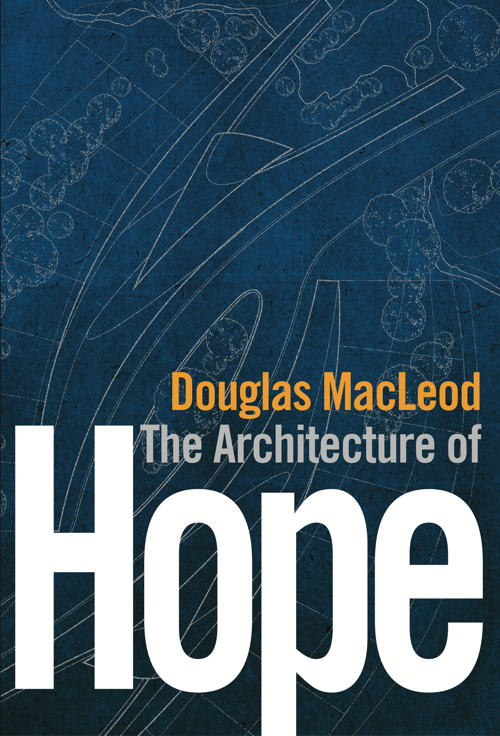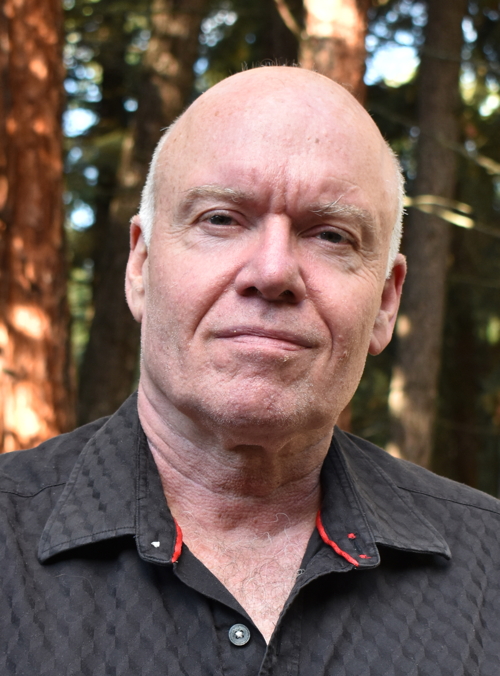
The Architecture of Hope

 Architect and educator Douglas MacLeod offers a stark and immediately compelling glimpse into the
future, 15 years hence, in which we can live and work together to build better communities for tomorrow.
Architect and educator Douglas MacLeod offers a stark and immediately compelling glimpse into the
future, 15 years hence, in which we can live and work together to build better communities for tomorrow.
This insightful and intriguing book, The Architecture of Hope, imagines the idea of cooperative communities where people can produce more energy than they use; purify more water than they pollute; grow more food than they consume; and recycle more waste than they produce, with technologies that already exist or that will be within our grasp in a few years. Most important of all, the people of the community own and profit from these resources.
The Architecture of Hope depicts a way of living
that is decentralized, re-localized, and regenerative. And possible.
“Our communities are overpriced, poisonous, overcrowded, unhealthy, wasteful energy pigs - not because they have to be but because it suits the vested interests that build, operate, and control them ...”
Strong words spoken by a character in The Architecture of Hope, Douglas MacLeod's striking glimpse into the near future. And yet this is not, at its core, a work of fiction.
So often the future we imagine is bleak. The environment, the quality of social engagement and cross-cultural relations, food security, education, work ... so much seems in decline. And, in fact, the future will be bleak, if we don't change our ways of thinking.
As one of the characters notes, “The big idea is that we could restore rather than destroy; we could produce rather than consume; and we could purify rather than pollute - not just the Earth but our bodies and minds as well.”
While this scenario describes how we can use new technologies to achieve these goals, it emphasizes that, most of all, we need to change our thinking. It's not that our communities can give us hope directly, but they can provide a scaffolding so that we can create full, meaningful and hopeful lives for ourselves, our families, and our neighbours.
What reviewers have to say about the book
“As an advocate of simply ‘treading lightly on the earth’, it is a pleasant surprise to read a series of what in effect are chapters of positive short stories in this book about the real meaning of that phrase; without the verbose jargon and politicization associated with architects and engineers who espouse architecture, sustainability and regeneration as a necessary ‘cause’. Aside from my own favorite chapter topics that explore the very real potential of inherently regenerative, geo thermal energy systems and vertical urban farming, the subject matter in total is vast for such a short book, representing a comprehensive survey of the art of the possible, with technology in harmony with nature as the catalyst. More importantly, I sense a clear intention of the author - a highly respected architect, educator and futurist - to write a compelling narrative but in lay person terms; to first entertain but importantly remove the mystery about design as a sophisticated and deeply complicated process. Instead, Dr MacLeod invents a simple, powerful ‘story telling prototype’ and brings it to an eminently believable and visually imaginative level. Readers of all ages will be quickly educated in understanding the possibilities, if not the inevitability of what could actually happen with courageous and committed efforts deployed around making our ‘communities’ of the future.” – Barry Johns, Architect AAA Life Member FRAIC RCA (HON) FAIA
“Using the ancient tradition of story-telling, Dr MacLeod has brought some of the arcane principles of what it would take for humans to live in harmony with our planet into a narrative that is a delight to read. Inventing fictional characters and a fictional place he engages the reader while brilliantly describing the conditions that are necessary for a balanced life in nature. Architects and engineers have long understood the knowledge and technology required to solve the climate change problem as it relates to infrastructure and buildings, but are often thwarted by a lack of will from politicians, economists and those in positions of authority who have contravening interests. In The Architecture of Hope we are presented with credible answers to some of those impediments too. This book is required reading for anyone suffering from the constant bad news about how all is lost on the climate change debate. It is both inspired and inspiring.” – Robert (Bob) Davies Architect, OAA, AIBC, SAA, AANB, NSAA, FRAIC, Director and Principal, Montgomery Sisam Architects, Past Chair Environmental Defence Canada
About the Author, Douglas MacLeod
 Over the last 30 years, Dr. Douglas MacLeod has
been creating visionary projects that have transformed the arts, architecture, and education. From pioneering work in virtual reality at the Banff Centre to eduSourceCanada - the country's largest e-learning initiative to date - MacLeod has led the work that defines our future. A registered architect, he is currently the Chair of the Centre for Architecture at Athabasca University, an online program that has quickly grown to be one of the largest and most innovative in the world. Now in his latest work he weaves together architecture, technology, and economics into a compelling vision of how we can live together in the future.
Over the last 30 years, Dr. Douglas MacLeod has
been creating visionary projects that have transformed the arts, architecture, and education. From pioneering work in virtual reality at the Banff Centre to eduSourceCanada - the country's largest e-learning initiative to date - MacLeod has led the work that defines our future. A registered architect, he is currently the Chair of the Centre for Architecture at Athabasca University, an online program that has quickly grown to be one of the largest and most innovative in the world. Now in his latest work he weaves together architecture, technology, and economics into a compelling vision of how we can live together in the future.
ISBN 978-1-77343-174-1 | 4.75" x 7" Paperback, 80 pages, $12.95
Order your copies now! Click Here to Order
|
|
|